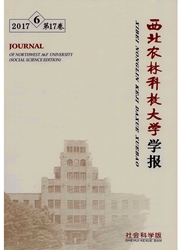

 中文摘要:
中文摘要:
运用内生经济增长模型,结合我国农村地区金融和经济的实际情况,采取1981~2008年的时间序列数据,通过向量自回归检验我国农村金融发展与经济增长之间的某种关系,实证检验结果显示:我国农村金融发展与经济增长保持一种长期稳定关系,农村金融发展促进农村经济的增长。农村金融的介入激发了农村经济增长的潜力,收入是影响农村经济增长的主要因素,但是人均收入并不是金融发展的主要因素。农村投资产出比长期保持一个较低的水平,这种低水平状态表明了农村金融发展的薄弱,投资产出比与经济增长呈现负相关,投资量在产出量得比重太小,没有对经济产生影响;农村中的贷存比保持一个良好的状态,农村储蓄的资金更多流向了农村贷款。因此,在发展农村金融时,应该更加注重农村制度的改革,鼓励和支持民间金融的发展,实现农村金融机构和形式多样化,多渠道促进农村贷款量的增加,有效地促进农村金融体系适应农村经济的发展。
 英文摘要:
英文摘要:
In use of endogenous economic growth model,combined with the actual financial and economic situation in China's rural areas,to take the 1981~2008 time series data,a vector auto regression is adopted to examine the relationship between China's rural financial development and rural economic growth.The empirical test the results show that: the development of China's rural finance maintains a long-term stable relationship with the rural economic growth,and rural financial development promotes the growth of the rural economy.The introduction of rural finance stimulates the potential of rural economic growth,and income is the main factor affecting the growth of the rural economy,but the per capita income is not the main factor of financial development.The ratio of rural investment to output maintains a lower level in long-term,such a low level state first shows that the development of rural finance is weak and the investment-output ratio is negatively related to economic growth,the volume of investment takes too small proportion in the volume of output,so it has almost no impact on the economy;the ratio of rural loan to deposit maintains a good state,and most capital of rural savings flows to rural loans.Therefore,in development of rural finance,more attention should be paid to rural reform,to encourage and support the development of private finance,diversify rural financial institutions and forms,increased rural loan amount in multi-channels and promote rural financial system to adapt to the rural economic development.
 同期刊论文项目
同期刊论文项目
 同项目期刊论文
同项目期刊论文
 期刊信息
期刊信息
